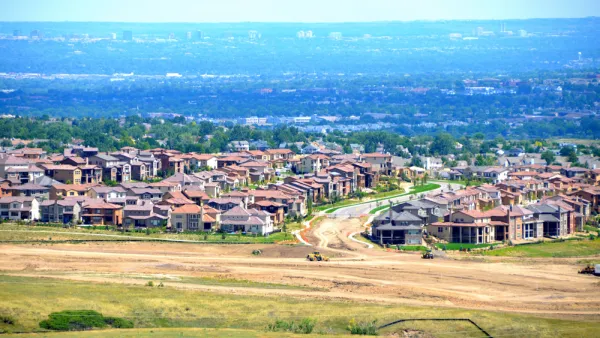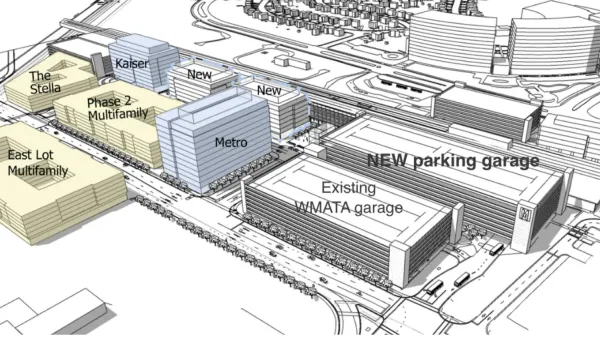Retrofitting suburbia may be a challenge in a small town with high birth rates.

Last week, I visited a very unusual college town: Lakewood, New Jersey, roughly halfway between New York and Philadelphia. Lakewood is dominated by yeshivot- academies for the study of the Talmud and other Jewish sacred texts. Most students at these academies are college-age Orthodox Jews (in particular, "yeshivish" Jews who tend to be more ritually strict than modern Orthodox Jews and less so than Hasidic Jews). Because the yeshivot have grown rapidly over the decades and the students marry early and rarely practice birth control, Lakewood is growing rapidly: its population has doubled since 1990.
Normally, growing cities full of young people have prosperous downtowns. But downtown Lakewood is just so-so: certainly stronger than many Sun Belt downtowns, but far less busy than many college towns. The downtown has a small grocery store and a smattering of Jewish-oriented businesses; many of the larger businesses have migrated to the edge of town. Compared to the Orthodox neighborhoods of Brooklyn, downtown Lakewood seems lackluster. What’s wrong here?
I talked to a few locals, and got this story: because Lakewood is not close to any big city, it has minimal public transit, and the transit that exists is designed to serve long distance commuters rather than local residents. So when the town grew, the number of cars grew, making driving and parking difficult. Much of the downtown's retail moved to suburbia where parking was easier, and many new jobs are in suburban office parks.
However, this story misses a key detail; the blocks surrounding downtown are already dominated by parking. In fact, the downtown seems to have far more "homes" for parking than for people—and yet the parking still is not convenient for many. So in Lakewood, as in many other downtowns, the attempt to build a parking-oriented downtown is not working.
So my instinctive response would be to replace the parking lots with apartment buildings and offices; if more people lived and worked within a block or two of downtown, the retail stores would have more shops, and whatever the town lost from fewer parking spaces would be made up for by increased pedestrian retail traffic.
Having said that, Lakewood is unique in one respect. A typical college town has lots of single young adults who can live in small apartments, which in turn means that a developer can cheaply build lots of apartments. But in Lakewood, 61 percent of rental households have children under 18. (By contrast, in Charlottesville, Virginia, home of the University of Virginia, only 21 percent of rental households have children under 18.) So the "retrofitting suburbia" playbook may have to be modified to fit this reality, perhaps by building apartments with more bedrooms.
In addition, some public transit to and from the edge of town might reduce demand for driving. About 13 percent of Lakewood households have no car, somewhat more than in most suburbs. And 40 percent of households have just one car—not an abnormally high number by national standards, but high for suburbia. By contrast, in nearby Howell, only 25 percent of households have fewer than two cars. So there may be latent demand for better bus service—and if the city grows up instead of out, there may eventually be enough of a population base to justify some sort of light rail.

National Parks Layoffs Will Cause Communities to Lose Billions
Thousands of essential park workers were laid off this week, just before the busy spring break season.

Retro-silient?: America’s First “Eco-burb,” The Woodlands Turns 50
A master-planned community north of Houston offers lessons on green infrastructure and resilient design, but falls short of its founder’s lofty affordability and walkability goals.

Delivering for America Plan Will Downgrade Mail Service in at Least 49.5 Percent of Zip Codes
Republican and Democrat lawmakers criticize the plan for its disproportionate negative impact on rural communities.

Test News Post 1
This is a summary

Test News Headline 46
Test for the image on the front page.

Balancing Bombs and Butterflies: How the National Guard Protects a Rare Species
The National Guard at Fort Indiantown Gap uses GIS technology and land management strategies to balance military training with conservation efforts, ensuring the survival of the rare eastern regal fritillary butterfly.
Urban Design for Planners 1: Software Tools
This six-course series explores essential urban design concepts using open source software and equips planners with the tools they need to participate fully in the urban design process.
Planning for Universal Design
Learn the tools for implementing Universal Design in planning regulations.
EMC Planning Group, Inc.
Planetizen
Planetizen
Mpact (formerly Rail~Volution)
Great Falls Development Authority, Inc.
HUDs Office of Policy Development and Research
NYU Wagner Graduate School of Public Service






























